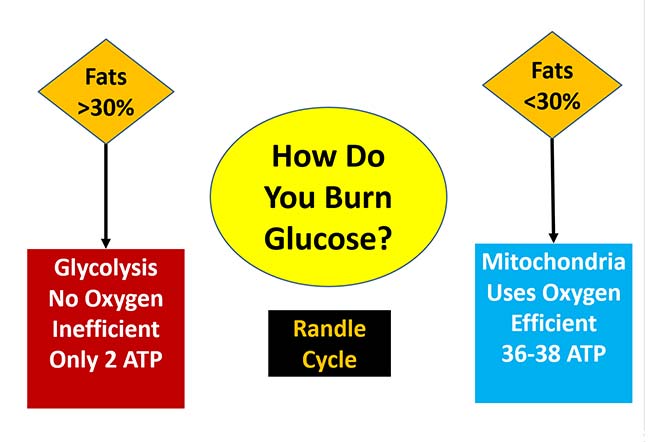Ivermectin may not just be the anti-parasitic, anti-cancer, anti-viral repurposed drug we recognise but may have multiple other neuroprotective benefits for humanity in an era where we all may be subjected to neurotoxins – some apparent like vaccines and others invisible like electromagnetic frequencies (“EMFs”).
We all should know that ivermectin is effective not only against river blindness but can be repurposed against many different types of cancer, even against metastatic disease.
During the 2020 pandemic, ivermectin saved many lives worldwide, and not just in the Intensive Care Unit. Ivermectin has also been used to treat long covid and long vaxxed patients by eminent physicians like Dr. Pierre Kory. Some people, like yours truly take ivermectin weekly for its protective or preventative effects.
When you consider the broad spectrum of its anti-disease activity in combination with its vast safety profile, why would you not?
Ivermectin is not only anti-parasitic, but it is anti-viral, anti-bacterial and anti-cancer. But today we know there is more and much more.
Dr. William Makis recently wrote about how ivermectin has properties of promoting remyelination in demyelinating diseases like multiple sclerosis. However, ivermectin has long been known to have potential effectiveness against motor neuron disorders like ALS or Lou Gehrig’s disease.
Ivermectin has shown such great promise against ALS, a patent application was filed by Belgian scientists in 2007.
“Use of ivermectin and derivates thereof for the treatment of amyotrophic lateral sclerosis’ (Publication No.: WO/2008/034202A3), to cover the use of ivermectin and analogues, to prevent, retard and ameliorate a motor neuron disease such as amyotrophic lateral sclerosis and the associated motor neuron degeneration.”
There is emerging evidence that ivermectin may be effective not just against ALS, but against a variety of neurological disorders including Parkinsonism, a disease that many link with the mRNA injections.
Ivermectin exerts much of its neuroprotective effects by modulating P2X4.
“Because of its action on P2X4 receptors, ivermectin has potential with respect to preventing alcohol use disorders[92] as well as for motor neuron disease.[93]”
As an aside, ivermectin reverses the effect of alcohol on P2X4 and has the potential to reduce cravings and consumption of alcoholic beverages in those afflicted with substance use disorder.
However, back to neuroprotection.
“Ivermectin (IVM), a positive modulator of P2X4Rs, enhanced levodopa (L-DOPA)-induced motor behaviour. Thus, IVM is increasing striatal dopamine release through enhanced cholinergic activity on dopamine terminals.”
If it is neuroprotective, and the evidence is growing that it is, and humanity is being bombarded with various toxins and electromagnetic frequencies each day that compromise our nervous system, perhaps there is reason to consider ivermectin as a neuro-protective repurposed drug worthy of use during this dangerous time in our history.
Ivermectin’s main mechanism of action in neuroprotection seems to be its stabilisation of P2X4 receptors.
“Ivermectin is a positive allosteric modulator of P2X4 that stabilises this subunit in the open state [20], which consequently may also prevent P2X4 internalisation [21, 22].”
Why is the stabilisation of P2X4 so important?
Because overexpression of P2X4 is not only a disease driver in ALS and Parkinsonism, it plays a key role in many other diseases including Multiple Sclerosis, Alzheimer’s Disease, Chronic Neuropathic Pain, Migraine, Epilepsy, Alcohol Use Disorder, Depression, Bipolar, Schizophrenia and Anxiety.
Or to put it more technically, this study explains the pathological role of P2X4:
“In various pathological states, such as trauma, ischemia, chronic pain, neurodegenerative processes and several neuropsychiatric disorders, de novo expression of P2X4 and/or an increase in cell surface P2X4 density has been reported in microglia and/or neurons, thus suggesting possible key and multiple roles of neuronal and microglial P2X4 receptors in the establishment and/or maintenance of these pathologies [25]. Changes in the intracellular expression of P2X4 may also have important consequences in the pathophysiological context.”
The following study on the effect of allosteric modulators on P2X4 – like ivermectin – highlighted its potential effectiveness in neuroprotection.
“Collectively it appears that there is good evidence that positive allosteric modulation of P2X2, P2X4, and P2X7 receptors may be of therapeutic benefit in a number of different conditions summarised in Figure 2. It is also clear that there may be endogenous molecules, particularly in the central nervous system, that could act as positive modulators to enhance the action of the physiological agonist ATP (e.g., neurosteroids on P2X2 and P2X4).”
Ivermectin may not just be the anti-parasitic, anti-cancer, anti-viral repurposed drug we recognise but may have multiple other neuroprotective benefits for humanity in an era where we all may be subjected to neurotoxins – some apparent, and others invisible like EMF.
About the Author
Justus R. Hope is a writer’s pseudonym for a medical professional and author who has written extensively on the topics of medicine, health and disease. He graduated summa cum laude from Wabash College and earned his medical degree from Baylor College of Medicine. He also completed a residency in Physical Medicine & Rehabilitation at The University of California Irvine Medical Centre. He has practised medicine for over 35 years and maintains a private practice in Northern California.
Dr. Hope has written several books, including ‘Ivermectin for the World’, ‘Surviving Cancer, Covid-19, and Disease: The Repurposed Drug Revolution’ and ‘Ivermectin for Freedom’. His work focuses on the use of repurposed drugs to treat various diseases, including cancer and covid-19.
He publishes articles on a Substack page titled ‘Repurposed Drugs: Powers & Possibilities’ which you can subscribe to and follow HERE.




